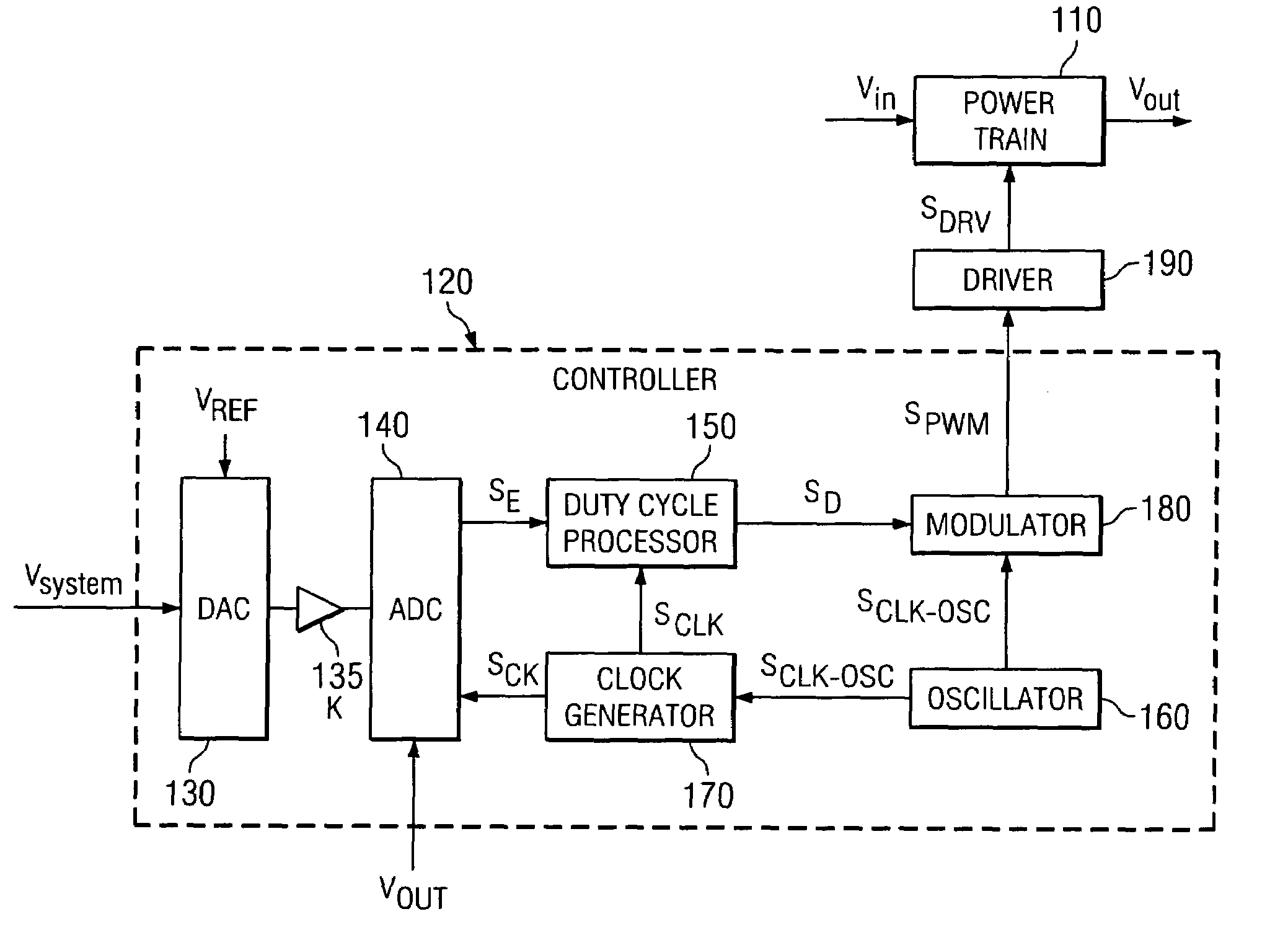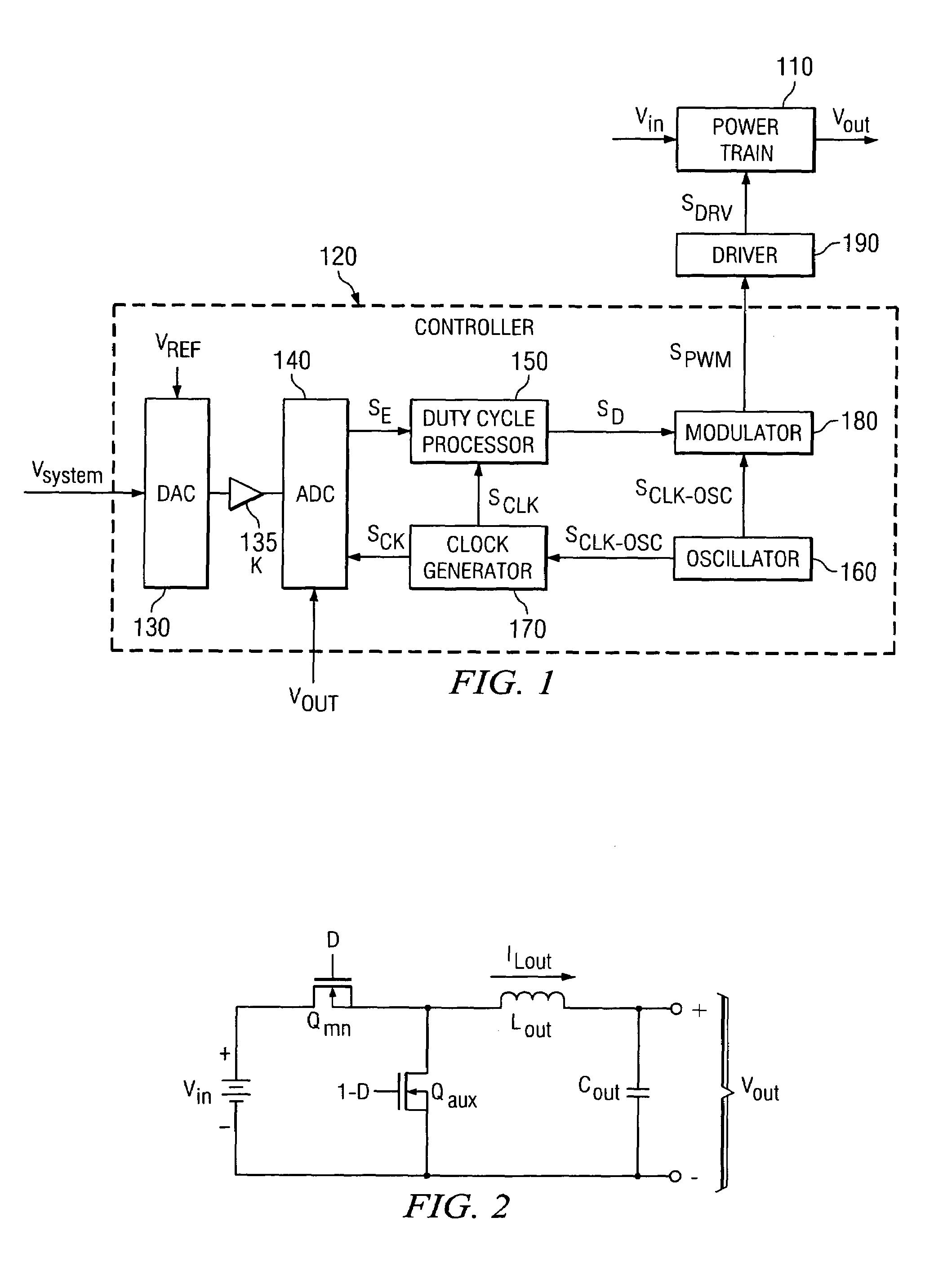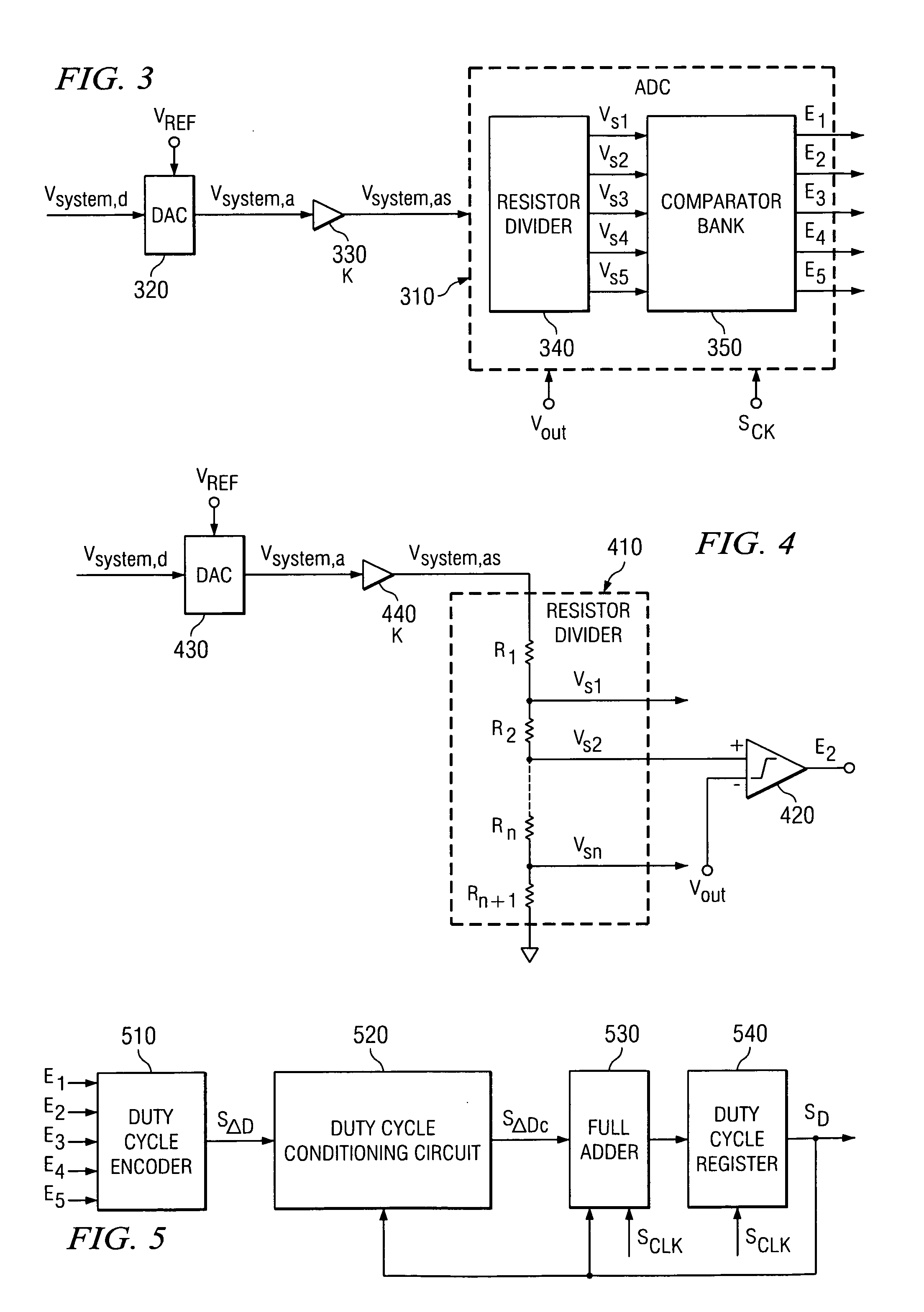Controller for a power converter and a method of controlling a switch thereof
a technology of power converter and control board, applied in the direction of electric variable regulation, process and machine control, instruments, etc., can solve the problems of large inventory cost, unsatisfactory analog circuitry, complicated and expensive manufacturing process,
- Summary
- Abstract
- Description
- Claims
- Application Information
AI Technical Summary
Benefits of technology
Problems solved by technology
Method used
Image
Examples
Embodiment Construction
[0024]The making and using of the presently preferred embodiments are discussed in detail below. It should be appreciated, however, that the present invention provides many applicable inventive concepts that can be embodied in a wide variety of specific contexts. The specific embodiments discussed are merely illustrative of specific ways to make and use the invention, and do not limit the scope of the invention.
[0025]The present invention will be described with respect to preferred embodiments in a specific context, namely, a controller for a power converter, method of operation thereof and a power converter employing the same. The principles of the present invention, however, may also be applied to all types of power supplies employing various conversion topologies that may benefit from a controller employing digital circuitry. The advantages associated with the controller and power converter further exploit the benefits associated with the application of digital systems in electro...
PUM
 Login to View More
Login to View More Abstract
Description
Claims
Application Information
 Login to View More
Login to View More - R&D
- Intellectual Property
- Life Sciences
- Materials
- Tech Scout
- Unparalleled Data Quality
- Higher Quality Content
- 60% Fewer Hallucinations
Browse by: Latest US Patents, China's latest patents, Technical Efficacy Thesaurus, Application Domain, Technology Topic, Popular Technical Reports.
© 2025 PatSnap. All rights reserved.Legal|Privacy policy|Modern Slavery Act Transparency Statement|Sitemap|About US| Contact US: help@patsnap.com



